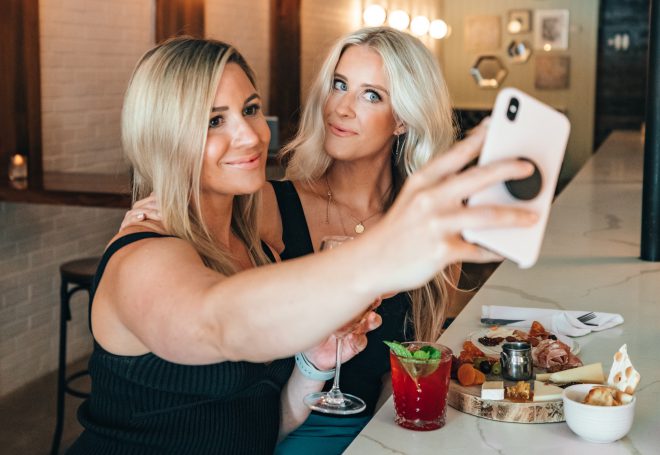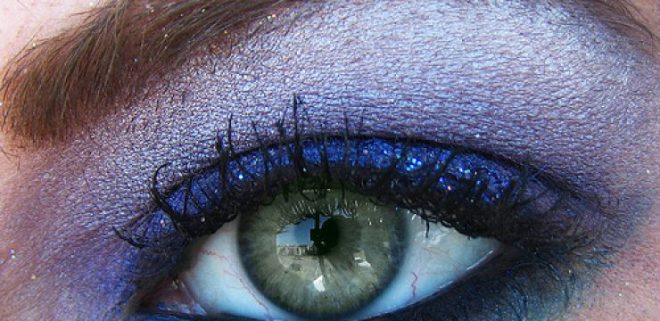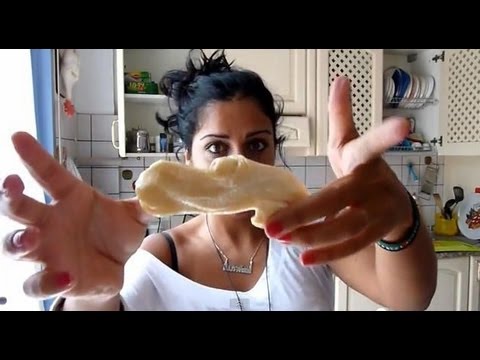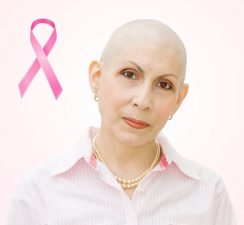 Take a deep breath before you take that selfie. About one in 7 products contain asbestos if they are made with talc.
Take a deep breath before you take that selfie. About one in 7 products contain asbestos if they are made with talc.
If you or a girlfriend is using cosmetics there is a significant chance they are being exposed to a deadly carcinogen –– asbestos –– according to laboratory tests of talc-based cosmetics products, commissioned by the Environmental Working Group (EWG) in Washington. About one in 7 products they tested contained asbestos. Talc is present in many make-up products as a filler, even in eyeliner. This is a new worry on top of all the other potential toxins in our makeup.
This is the same group that told us about dangerous pesticides in the popular hummus brands we love to eat.
The consumer watchdog group commissioned a series of laboratory tests of talc-based cosmetics by the Scientific Analysis Institute in Greensboro, NC.
EWG uses science to bust myths or invalidate safety claims and found asbestos – a deadly human carcinogen for which there is no safe level of exposure – in almost 15 percent of samples of cosmetics they tested. Do you use face powder, eye shadow, eyeliner, bronzer, or a dry lipstick? If yes, check your brands. Read below for a link to where you can check.
The danger from asbestos exposure is by inhalation of these talc-based products which pick up the asbestos when the talc is being mined. The methods used by the cosmetics industry to screen talc supplies are inadequate, says
The analysis, published in the science journal Environmental Health Insights, calls attention to the outdated methods used for screening this potential hazard in talc-based cosmetics.

Nneka Leiba
“Many well-known brands use talc in body and facial powders that can be inhaled,” said Nneka Leiba, a vice president for at the Environmental Working Group. The organization’s database lists more than 2,000 personal care products that contain talc, including liquid soaps and over 1,000 loose or pressed powders that could pose an inhalation risk: “It’s troubling to think how many Americans have been using talc-based cosmetics products potentially contaminated with asbestos,” says Leiba.
Cosmetics companies have known since the 1950s that talc could be contaminated with asbestos, and the public was alerted in the early 1970s. But the cosmetics industry persuaded the Food and Drug Administration that it could be trusted to regulate its own products – and that cosmetics companies should be allowed to rely on an asbestos detection method that could see some but not all asbestos fibers.
In May, Johnson & Johnson announced it would end the sale of its talc-based baby powder in the United States and Canada. Thousands of people, mostly women, filed lawsuits against the company, claiming the product caused cancer.
“Inhaling even the tiniest amount of asbestos in talc can cause mesothelioma and other deadly diseases, many years after exposure,” said Tasha Stoiber, Ph.D., a senior scientist at EWG. “How much talc is inhaled – and how much is contaminated with asbestos – is hard to know, but it only takes one asbestos fiber, lodged in the lungs, to cause mesothelioma decades later.”

Exposure to asbestos is linked to asbestosis, mesothelioma, and lung and ovarian cancer. Even exposures as short as a few days can cause mesothelioma, an incurable cancer, many years later. Studies have found more than 60 percent of mesothelioma cases in women are likely attributable to non-occupational exposure to asbestos. Does that mean in their cosmetics? Likely.
Remember when parents would put talc on babies’ bottoms to stop diaper rashes?
Despite asbestos’ declining use in the US, mesothelioma deaths remain substantial, especially among younger people. From an analysis of federal mortality data, EWG Action Fund estimated that up to 15,000 Americans die each year from asbestos-triggered diseases.
Geologically, talc and asbestos can be formed from the same parent rock, which is mined for both cosmetics use and industrial use. Talc is often used to improve the texture and feel of cosmetics, to absorb moisture or as an inexpensive filler.
The Scientific Analytical Institute, of Greensboro, N.C., conducted the tests. The institute is one of the world’s leading laboratories testing consumer products for the presence of asbestos. Samples were analyzed using electron microscopy, following test procedures described by the Environmental Protection Agency.
The FDA does not require mandatory testing of talc supplies. The cosmetic industry’s voluntary method is not sensitive enough to screen for asbestos when compared to electron microscopy.
Children, make-up artists at risk

“It is critical that the FDA develop a rigorous screening method for talc used in personal care products,” said Sean Fitzgerald, the head of Scientific Analytical Institute. “The lab repeatedly finds asbestos in products made with talc, including cosmetics marketed to children. It’s outrageous that a precise method for testing personal care products for the presence of asbestos exists, but the cosmetics industry isn’t required to use it.”
Fitzgerald is a nationally recognized expert who has conducted tests for asbestos in numerous consumer products. His lab tested 21 samples of cosmetics, in powder, liquid and cream forms, including eye shadow, foundation, blush, face and body powders.
“While consumers should be alarmed and outraged, it’s hardly a surprise, considering the federal law regulating the cosmetics industry has not been updated since 1938,” said Scott Faber, EWG’s senior vice president for government affairs.
“It’s long past time for Congress to pass legislation mandating that all talc-based personal care products be rigorously tested and the cosmetics industry be required to put the public’s safety first. The current system, which has allowed the cosmetics industry to operate beyond the reach of FDA’s authority, must end.”
The federal government agrees there is no safe level of asbestos exposure, yet it does not require that cosmetics be tested for safety before they go on the market. Instead the FDA encourages companies to select talc mines carefully to avoid asbestos contamination, but it does not have the power to regulate products that contain talc.
Alternatives to talc?
Snapchat and Instagram all have fake makeup filters. So does the Chinese makeup app Meitu. Use them without limits. No asbestos applied, even on Putin who has very dewy skin in the image below augmented by Meitu.

Putin and the Chinese make-up app Meitu, via NY Mag
Or this advice … for decades women have been told we need makeup to be beautiful. We like to encourage women to go au naturel. And I don’t mean the “no makeup” makeup look. I personally do not use makeup and just a touch of organic face cream once a week or less.
There are alternatives to talc such as cornstarch or arrowroot-based powders. EWG’s Skin Deep database rates more than 80,000 products based on the hazards associated with their ingredients, and every product category that has talc-containing products, also has non-talc-containing options.
I checked out the database and it’s hard to use if you are looking in general but it does give you insight on what to look out for on the ingredients list. And it does have warnings on very specific products.
Avalon Organics Intense Defense is a Vitamin C renewal green which is vegan, biodegradable and with no GMOs. And it’s talc-free. I can find it a local pharmacy and it’s useful just after a shower. But the Skin Deep database rates it a “4” for some immunotoxicity issues. 10 is the worst, 1 is the best.
Another product I use is one my cousin gave me: a gift of handmade Radiance face cream by Sweet Song Herbals in Ontario. The cold cream must be kept in the fridge and I add it to my face every couple of weeks or so when I am looking for the hot sauce.
The company can’t be found in the database but the products list things I know: *Rose Water, *Apricot Kernel Oil, *Rose Hip Oil, *Pumpkin Seed Oil, *Jojoba, *Coconut Oil, *Sea Buckthorn Oil, Emulsifying Wax (plant based vegan), Certified Organic Essential Oils with * being organic and food quality.

Miriam showed me some beauty hacks from the Bedouin
Sweet Song also has a Deodorant Cream I use. It’s infused with herbs and secrets that the artisnal company grows in their garden in Lakefield, Ontario. I like that. Probably a safer bet than Avalon.
There are plenty of talc alternatives out there after you stop reaching for the powder, and the industrial creams and face products that may be organic or not tested on animals.
DIY skincare and sugaring
The talc- and preservative-free alternatives might even be in your kitchen cupboard: olive oil is known as a basic beauty secret for Mediterranean women. And one that Cleopatra used. Buy a light oil if you don’t want to smell like a salad. And blot off the extra with a towel just after application. The Bedouin also have some beauty hacks. Find some here.

Learning how to make sugar wax the hard way
And we’ve got you covered if you want a rehydrating facecream. Our resident herbalist Miriam has cooked up a facecream recipe for you here. If you are on a roll, you might as well make some sugar wax for your legs. It’s an ancient Persian secret.



